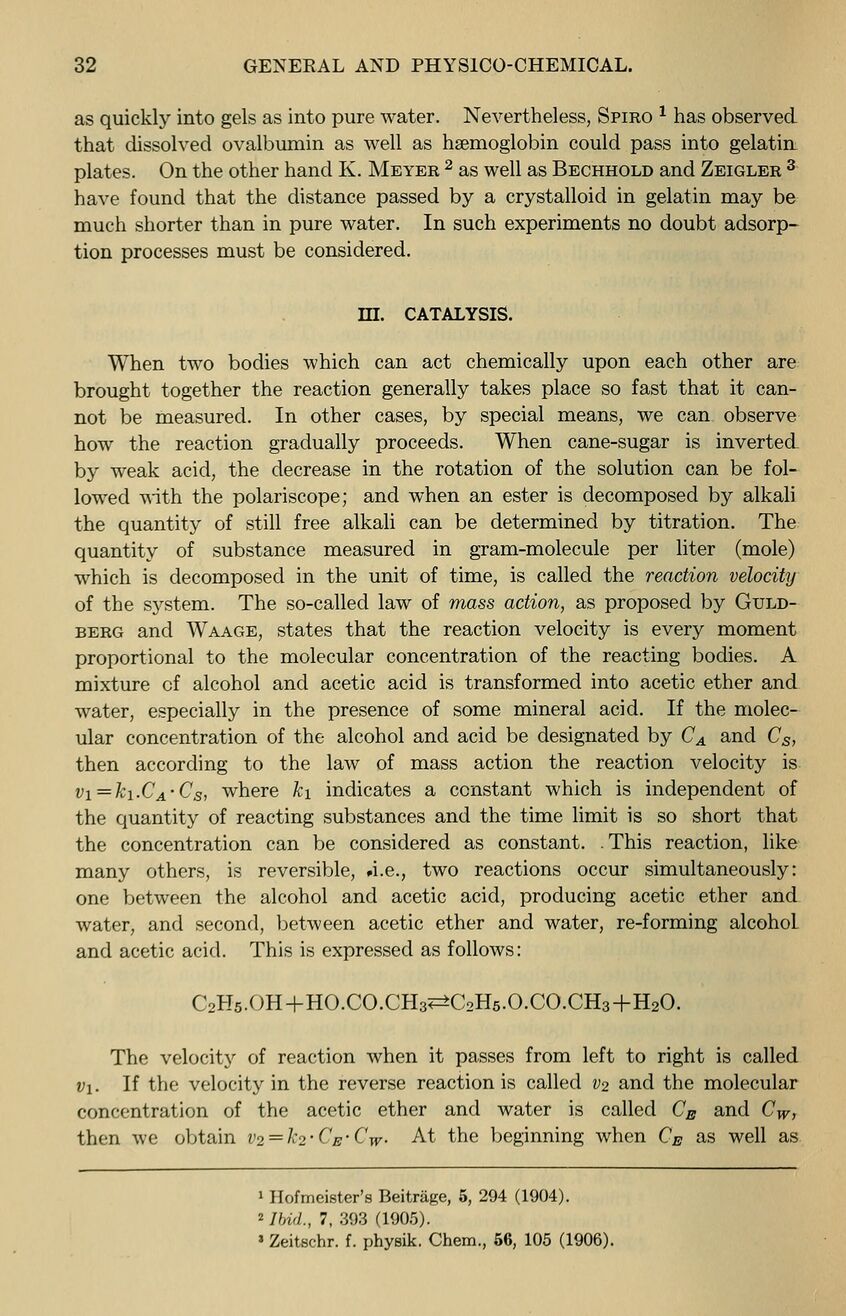
Full resolution (JPEG) - On this page / på denna sida - I. General and Physico-chemical - II. Colloids - Theories of Precipitation Phenomena - III. Catalysis

<< prev. page << föreg. sida << >> nästa sida >> next page >>
Below is the raw OCR text
from the above scanned image.
Do you see an error? Proofread the page now!
Här nedan syns maskintolkade texten från faksimilbilden ovan.
Ser du något fel? Korrekturläs sidan nu!
This page has never been proofread. / Denna sida har aldrig korrekturlästs.
32 GENERAL AND PHYSICO-CHEMICAL.
as quickly into gels as into pure water. Nevertheless, Spiro * has observed
that dissolved ovalbumin as well as haemoglobin could pass into gelatin
plates. On the other hand K. Meyer 2
as well as Bechhold and Zeigler 3
have found that the distance passed by a crystalloid in gelatin may be
much shorter than in pure water. In such experiments no doubt adsorp-
tion processes must be considered.
m. CATALYSIS.
When two bodies which can act chemically upon each other are
brought together the reaction generally takes place so fast that it can-
not be measured. In other cases, by special means, we can observe
how the reaction gradually proceeds. When cane-sugar is inverted
by weak acid, the decrease in the rotation of the solution can be fol-
lowed with the polariscope; and when an ester is decomposed by alkali
the quantity of still free alkali can be determined by titration. The
quantity of substance measured in gram-molecule per liter (mole)
which is decomposed in the unit of time, is called the reaction velocity
of the system. The so-called law of mass action, as proposed by Gtjld-
berg and Waage, states that the reaction velocity is every moment
proportional to the molecular concentration of the reacting bodies. A
mixture cf alcohol and acetic acid is transformed into acetic ether and
water, especially in the presence of some mineral acid. If the molec-
ular concentration of the alcohol and acid be designated by CA and Cs,
then according to the law of mass action the reaction velocity is
vi=ki.CA -Cs, where &i indicates a constant which is independent of
the quantity of reacting substances and the time limit is so short that
the concentration can be considered as constant. This reaction, like
many others, is reversible, #i.e., two reactions occur simultaneously:
one between the alcohol and acetic acid, producing acetic ether and
water, and second, between acetic ether and water, re-forming alcohol
and acetic acid. This is expressed as follows:
C2H5 .()H+HO.CO.CH3^C2H5 .O.CO.CH3+H20.
The velocity of reaction when it passes from left to right is called
V\. If the velocity in the reverse reaction is called v<z and the molecular
concentration of the acetic ether and water is called CB and Cw,
then we obtain V2 = ko- Ce-Cw. At the beginning when CE as well as
1
Hofmeister’s Beitriige, 5, 294 (1904).
2 Ibid., 7, 393 (1905).
1
Zeitschr. f. physik. Chem., 56, 105 (1906).
<< prev. page << föreg. sida << >> nästa sida >> next page >>